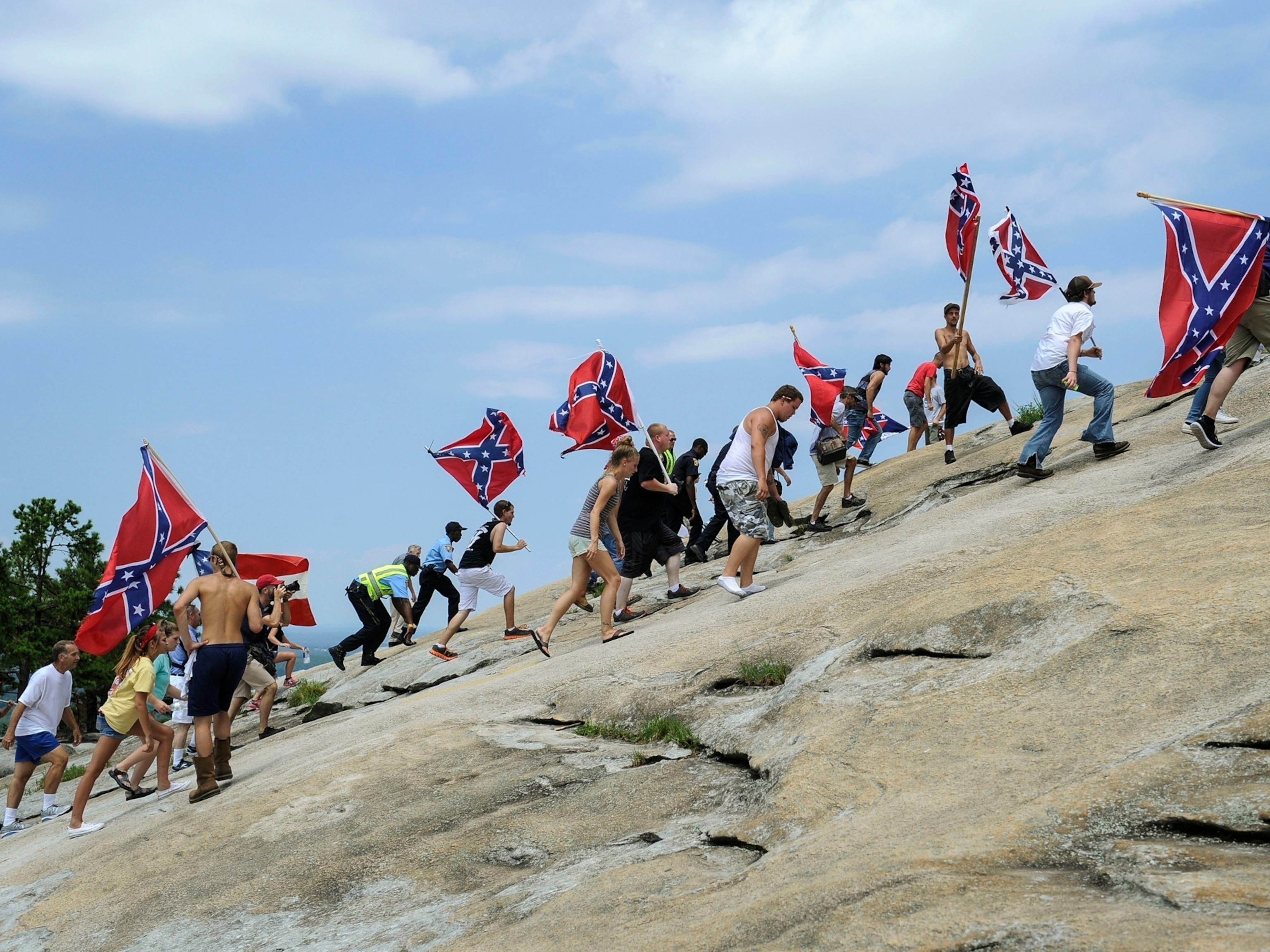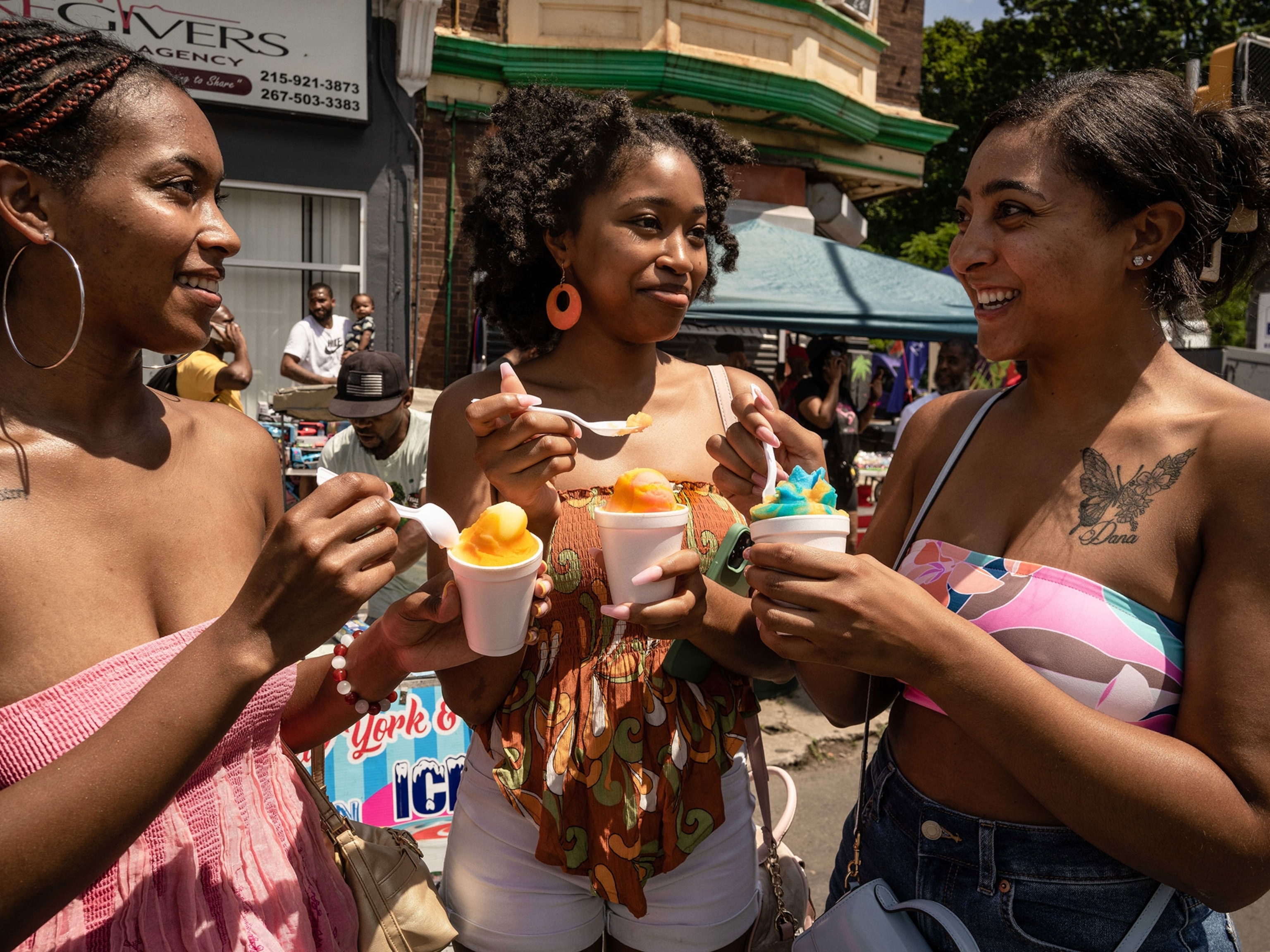In Charleston, Black history is being told through a new lens
The former slave trade capital of North America reckons with its past as cultural sites set the record straight.
None of the exhibits at the Old Slave Mart Museum in Charleston, South Carolina, will tell you that the fingerprints pressed into the building’s bricks are those of enslaved people. No poster explains that prior to the Civil War, enslaved African and African-descended people at nearby plantations made the material by hand: harvesting clay out of rivers, packing it into molds, continuously feeding the fire for the kiln.
When Ista Clarke was hired as the museum’s operations manager, he noticed the tiny fingerprints in a brick three months into the job—most likely from an enslaved child tasked with turning bricks over by hand as they dried. He began to curate dozens of photos of the bricks from across South Carolina and Georgia, calling the marks “an impression easily missed.”
The museum, located inside the concrete shell of the last standing slave auction hall in South Carolina, summons a painful scene from that era with a soundtrack of clinking chains and bartering salesmen. Three silhouettes—labeled trader, slave, and buyer—cover one wall. Placards detail a day in the life of a slave trader. The museum, like many other sites in Charleston, is still figuring out how to tell local Black history after centuries of suppression.
Between the early days of the Carolina colony in 1670 and the 1808 federal ban on “importation of persons,” about 40 percent of enslaved Africans forced into North America passed through Charleston’s harbor. Slavers confined those who survived the passage to various warehouses and slave markets until selling them to the highest bidder. Historians estimate that more than 90 percent of all African Americans can trace at least one ancestor to this area.
June 23 marks one year since the city council voted to remove the statue of prominent Southern politician and defender of slavery John C. Calhoun—citing the police killing of George Floyd and “the voices of protest” that followed as catalysts. It‘s also three years since the city apologized for its role in the slave trade. After 20 years of planning, the International African American Museum is scheduled to open next year on the plot of the former Gadsden’s Wharf—a feat that South Carolina Democratic representative and museum board member James E. Clyburn has called “long overdue.”
(As monuments fall, how does the world reckon with a racist past?)
Yet, the city’s path to preserving and presenting Black history has been a contentious one, filled with starkly different narratives about its role in making America. “It’s about the ancestors,” says Clarke. “It’s always been about the ancestors. But unfortunately, the city doesn’t know that.”
Reckoning with racism and its legacies
When the original Old Slave Mart Museum opened in 1938, it was the first, and for many decades the only, museum dedicated to the slave trade in the United States.
The museum’s founder, a white Ohioan named Miriam B. Wilson, filled the gallery with crafts like hand-sewn sheets and ironworks made by enslaved people. Even though the mart was a commercial epicenter for the buying and selling of human beings, the museum’s exhibits reflected Wilson’s belief that the brutality of slavery had been overstated, and that it was primarily a civilizing institution.
(Take a virtual tour of South Carolina’s only civil rights museum.)
Those kinds of views were not uncommon in Charleston at the time, and they permeated through the budding movement to protect its colonial-era architecture. “There’s zero question that the history of the preservation movement in Charleston is a history of elite whites,” says Winslow Hastie about the city’s influential preservation movement that took root during Jim Crow. Hastie is a 13th-generation plantation owner and president and CEO of the nonprofit Historic Charleston Foundation (HCF).
The HCF is trying to change the course of a preservation movement that’s neglected Black history and, simultaneously, displaced Black people through restoration projects that systematically gentrified parts of Charleston. Some of that course change is happening at the Foundation’s house museums.
At the Aiken-Rhett House, opened in 1996, the audio tour begins with the workspaces and living quarters of the people who were enslaved there. Hastie believes the choice to replace docent-led tours with audio was about achieving consistency as much as avoiding deep-seated bias. “Back then,” he says, referring to the 1990s, “telling true history about the institution of slavery and what it did for the economy of Charleston was more controversial.”
“[The order of the tour] subverts the typical narrative where you start at the big fancy house,” continues Hastie, explaining that the Aiken-Rhett House lent itself to a more expansive interpretation of the lives of the enslaved because of the rare “intactness” of the outbuildings.
(Who owns history? Americans push to be more inclusive in honoring the past.)
At the HCF’s other museum, the Nathaniel Russell House, restoration of the enslaved quarters is currently underway. Hastie calls the 19th-century rats’ nests (or middens) found tucked between the kitchen house walls “time capsules for architectural historians.” The preserved bundles offer clues about the people who lived there: rice husks, scraps of letters, a whole piece of an enslaved man’s—probably a carriage driver’s—livery.
More than eight decades since its opening, the Old Slave Mart Museum no longer features Wilson’s collection. The City of Charleston purchased the museum building in 1988, after the attraction closed due to financial woes. Reopened as museum in 2007, the site now covers the evolution of the property and the local slave trade. Although Clarke no longer works there, he still believes the museum will one day embody the “sacred space it has the potential to be.”
Filling in the gaps of public history
When Michael Allen joined the National Park Service in June 1980, he noticed that something was missing from the historical narratives at the Charleston properties. At forts Moultrie and Sumter, there was no mention of slavery, even though the forts were built by enslaved laborers. The pest houses where captive Africans were left to quarantine after being hauled across the Atlantic Ocean were absent from information about Sullivan’s Island.
Instead, the focus narrowed in on military history: the defeat of the Royal Navy in 1776, and the first shots of the Civil War—a war that, according to the official narrative, was fought over tariffs and states’ rights. “Either I was out of place or the Park Service was out of touch,” Allen says, “and I didn’t believe I was out of place.”
(Learn how National Parks are working to combat racism.)
Through numerous projects over the course of four decades, Allen helped the Park Service improve its interpretation of Black history. One of those projects included the creation of the Gullah Geechee Heritage Cultural Corridor, which runs along the coast from Pender County, North Carolina to St. Johns County, Florida. The Gullah Geechee people are descendants of West Africans who—due to their isolation on sea and barrier islands during enslavement—retained many of their African traditions and developed distinctive foodways, crafts, spiritual practices, and language. The corridor highlights their vast contribution to the history and culture of the Lowcountry.
At the same time that Allen was helping the Park Service expand its interpretive approach, post-Civil Rights Charleston was coming to terms with its incomplete version of public history. The tourists who had powered the city’s economy since the early 1900s were increasingly interested in the Black culture that the city’s leadership suppressed.
As African American heritage tourism took off in the 1980s, independent tour guides picked up the slack where official sites lagged. Damon Fordham, who leads a Lost Histories of Black Charleston tour, sees himself as carrying on the storytelling work that’s preserved Charleston’s Black history all these years. “I deal a lot with the obscure and the social situations that lead to them,” says Fordham. One of the stops on his tour is the former City Jail on Magazine Street, where he points out fingerprints in the brick walkway and shares that those bricks likely came from Boone Hall Plantation in Mt. Pleasant—the same place his great-great-grandparents were enslaved.
The tides in South Carolina and its oldest city have continued to move toward a fuller representation of Black history; the city council’s unanimous vote to remove the Calhoun statue and (more divided) vote to apologize for slavery attest to that. Sweetgrass baskets, woven with techniques carried over from Africa, is recognized as the state craft. The bridge that crosses the Combahee River where Harriet Tubman raided Confederate troops and freed hundreds of enslaved people bears the abolitionist’s name.
These changes are the result of ongoing and centuries-long preservation, protest, and advocacy work, part of what Allen calls “higher consciousness.” He describes the forthcoming International African American Museum as a “linchpin” in the movement forward: “an opportunity for a new generation of people to take the baton and move it further than I could ever imagine.”
Jalen Coats is a writer and producer who has worked on projects for VICE, The Huffington Post, and HBO, and is currently based in North Carolina.






